How to Upload Images From Nintendo 3ds
I'm sorry to write this and so shortly later Nintendo appear the discontinuation of their 3DS after 10 years of production just you can still detect the last few in stock at some retailers and too easily find second-hand and refurbished ones if you lot don't have one already. I thought I'd explain how to utilize the Nintendo 3DS to take and display stereo images without spectacles, so if you or your children have one tucked abroad in a drawer at present is the time to dig information technology out and show some dearest for these amazing and innovative fiddling stereoscopic devices.
THE Glasses-Complimentary iii-D SCREEN
The summit Nintendo 3DS screen uses a parallax barrier which displays a stereoscopic image without the need for spectacles. A bulwark is used in forepart of the LCD screen and contains a serial of spaced slits which allows each heart separately to see a unlike fix of pixels, creating the 3-D depth using parallax, much like a lenticular screen. If you accept seen a FujiFilm W1 or W3 photographic camera you will be familiar with the display as they use the aforementioned engineering. This screen also allows you to utilise the Nintendo 3DS to display images which have been taken with a different device but they do need some editing before they tin can be used – see below.
The 'New' 3DS as well includes amazing face-tracking which automatically adjusts the top screen image to the player's viewing bending, allowing y'all to to tilt and move the screen (within reason – possibly not throw it across a room!) and yet be able to view the 3-D. The recommended viewing altitude for your eyes from the screen is approx. 30cm for the Nintendo 3DS and 35cm for the Nintendo 3DS 40.
THE 3DS STEREO CAMERA
I'll be talking nigh the Nintendo 'New' 3DS XL as it's the model I have and am well-nigh familiar with. The two 0.iii megapixel cameras are plant on the hat and are 3.5cm apart, so the best depth in the images is accomplished about 105cm away from the subject (this is according to the 1/30th rule – please see this post for data under the 'Making Images Comfortable to View' section) merely seeing as the 3DS screen is quite small you don't accept to lose too much sleep over this; the app itself recommends a distance of 30cm or more than from the field of study. I wouldn't advise projecting the images you make with the 3DS every bit the resolution is too depression to be shown enlarged but for most social media platforms used on small smartphone screens they work just fine. The stereo image file types made by the 3DS are MPOs (like the Fujifilm W1 and W3 cameras) and the video file types are AVIs.
MAKING STEREOVIEWS WITH THE 3DS STEREO Camera
In the primary menu screen become to 'Nintendo 3DS Camera' and if it's not already selected press 'Shoot' on the bottom left to open the cameras and brand sure the two forward facing cameras are selected by clicking on the top left photographic camera icon and select 'Outer'. I prefer to shoot directly to the microSD card in the 3DS and so I can upload the images to my Mac or Windows laptop; to do this get to bottom right 'Settings' and 'Photo Save Location' and ensure 'SD Card' is selected. If y'all already have some images saved on the Arrangement y'all can transfer them in this bill of fare past clicking 'Data Management' and 'Copy All Photos -System to SD Card' and when you're finished press 'Back' to take you dorsum to the shooting screen. In one case y'all're ready to photograph click on L, R or A to shoot the photograph, remembering not to go also close to the subject and the images are automatically saved. You can view your stereo images and videos in the image gallery, where you can also 'graffiti' an image. One of the options I like the nigh is the 3D Tool to enhance parts of an epitome so in theory y'all could turn a ii-D image into a 3-D 1 with a lot of time and patience (but real stereoscopic 3-D photos are sooooo much better 😉 ). The only thing I discover lacking is an Undo tool to reverse whatsoever mistakes you've made part way through – it's too tardily now though to hope that Nintendo will gear up this!
I took the following epitome of a kitty using the 3DS' stereo-photographic camera but I was far as well shut, but you lot know, cat. The stereo-photo also doesn't do the glasses-free display justice but you tin run across a similar stereo-photo I took with the 3DS below as a stereo card to see the depth from the cameras.
Parallel-view
Cross-view
Anaglyph
TRANSFERRING 3-D IMAGES FROM A NINTENDO 3DS
At present you have your saved stereo images on the 3DS' SD bill of fare yous can so transfer them to another device with a flake of faffing virtually depending on which 3DS you accept – earlier models allow you to access the SD card hands on the side to remove it and insert in to a bill of fare reader on your Windows device or Mac. This is far too easy and definitely not the case with the New 3DS 40.
For Windows 7 or 8 you lot can do a directly transfer – go to the 3DS Organisation Settings (the spanner icon), Data Management, microSD Direction and with the Windows laptop or PC continued to the aforementioned Wifi Network equally the 3DS follow the on-screen instructions from the 3DS to set the Admission Signal, User Proper name, Countersign and Proper name. After a while the 3DS volition appear on the Windows device under 'Network' (you may need to refresh) where you lot can access the files on the microSD card and direct transfer them.
If like me y'all have a Windows x device y'all will demand to edit the settings to allow admission to the 3DS Network: in the Windows ten's search bar search for 'Windows Features', click 'Turn windows features on or off', observe 'SMB one.0/CIFS File Sharing Support', expand the folder, enable SMB1.0/CIFD Customer and SMB1.0/CIFD Server, click OK and restart (y'all may want to alter these settings back after y'all've finished).
If yous have a Mac or you just tin can't get a Network connection you can also do this the DIY way: With the New Nintendo 3DS Twoscore there are two screws on the backplate which need loosening and then the backplate pops off by unfastening either side with the height of stylus in the recesses.
Yous'll find the micro SD card in the center nearly the top and it needs pushing in for it to pop out.
Make sure you have a micro SD card reader on your PC or Mac (you can hands buy these inexpensively on Amazon or eBay) and insert the carte du jour to show the file folders from the 3DS.
Much similar a smartphone or digital photographic camera the image files are in the DCIM folder and, like the default settings on a Fujifilm 3D photographic camera, each prototype is saved both as an MPO file and a mono JPG file.
I used StereoPhoto Maker to open and edit the MPO files, please see this tutorial for an explanation.
For this kitty epitome I used SPM to realign the images and push button her body behind the stereo-window (no kitties were harmed in the procedure), add a nice border and to make dissimilar types of stereoview:
Parallel-view (images taken with a New Nintendo 3DS XL)
Cantankerous-view (images taken with a New Nintendo 3DS Twoscore)
Anaglyph (images taken with a New Nintendo 3DS XL)
USING A NINTENDO 3DS TO Brandish STEREO-IMAGES
You tin can too apply the 3DS to display images made on another device as long equally they are in the correct format and again I use StereoPhoto Maker for this. StereoPhoto Maker allows you to open different format stereoviews, such a a left and right JPG image, a JPG stereoview, an MPO file, etc. so you tin can utilize it to open files from a smartphone, digital photographic camera, a scanned prototype, etc. I used an MPO file from a Fujifilm W3 camera and with StereoPhoto Maker I changed the dimensions to be New 3DS Twoscore-friendly by going to the Menus: Edit, Resize and irresolute 10 to 640 and Y to 480 – the same as the images taken with the 3DS. (Just every bit a side-note, the native resolution of the Nintendo 3DS XL screen is 800 10 240, or 400 per centre when viewed in iii-D, and then non astonishing but expert plenty for its size).
If yous're able to connect to the 3DS' Network you can wirelessly transfer the files across from a Windows device (see above). On my Mac I saved the file to the microSD carte in the DCIM binder as an MPO file.
One time the microSD menu is reinserted into the 3DS or the file is transferred you should be able to view the stereo-image in 3-D without spectacles in the Nintendo 3DS photographic camera app Slideshow. I should point out though that the file size is much larger than the native 3DS stereo images so you must be patient whilst it takes an historic period to open up, yous can of class reduce the size further.
Please notation that the screen doesn't photograph well considering of the parallax bulwark, you have to see 1 in person to really capeesh them but beingness able to view 3-D images and testify them to others without glasses really is awesome.
With the 0.3 megapixel cameras and depression resolution of the screen don't expect too much from the Nintendo 3DS and its stereoscopic paradigm capabilities, just call up to have fun and it really is! Information technology could be a great manner to introduced stereoscopy to newbies or children; apparently yous can also play games on the 3DS 😉

Copyright © The Stereoscopy Blog. All rights reserved.
Source: https://stereoscopy.blog/2020/09/25/using-a-nintendo-3ds-as-a-stereo-camera-and-viewer/
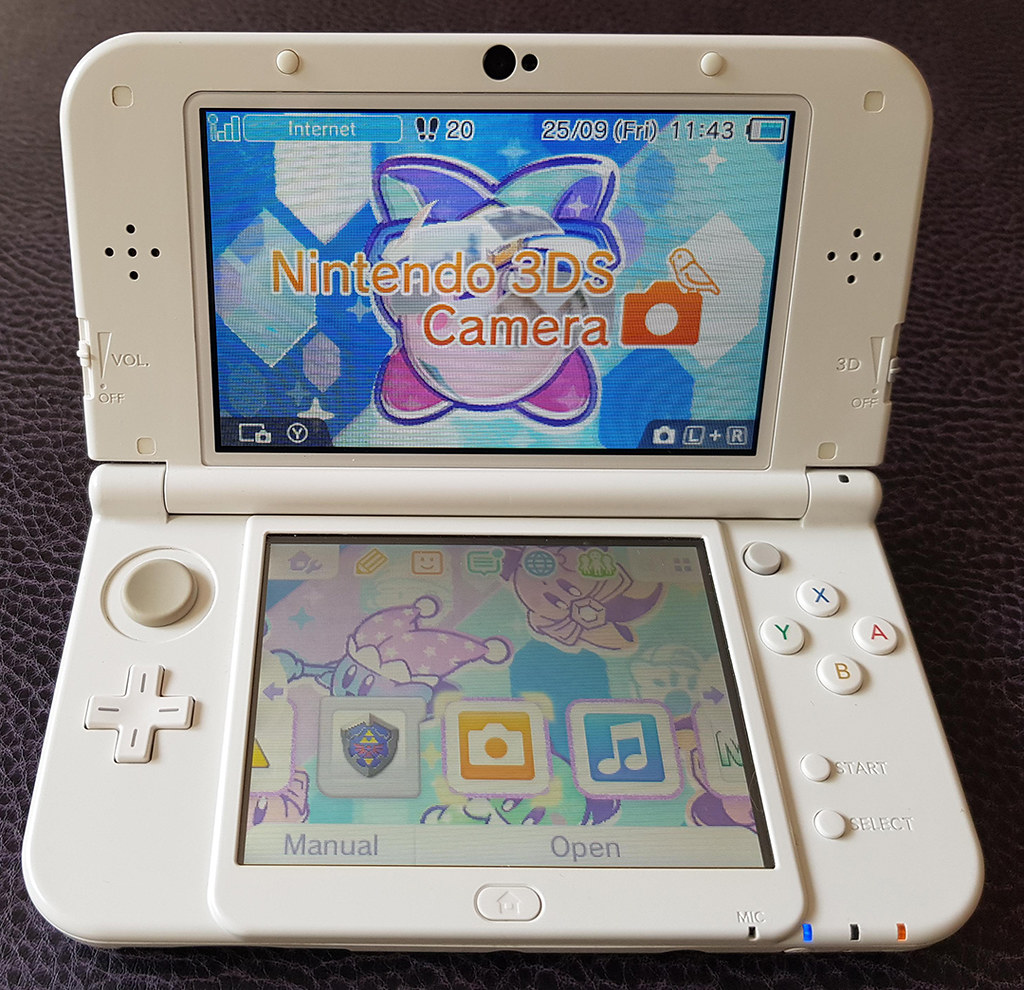


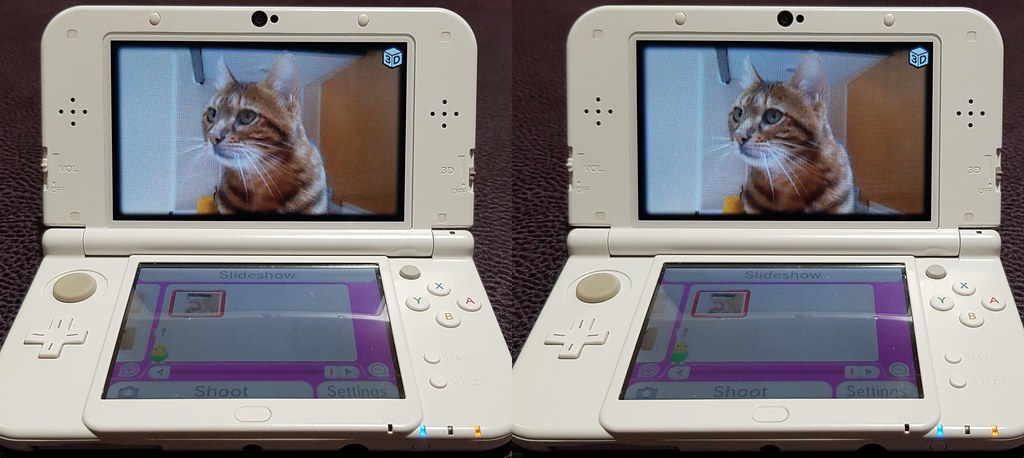


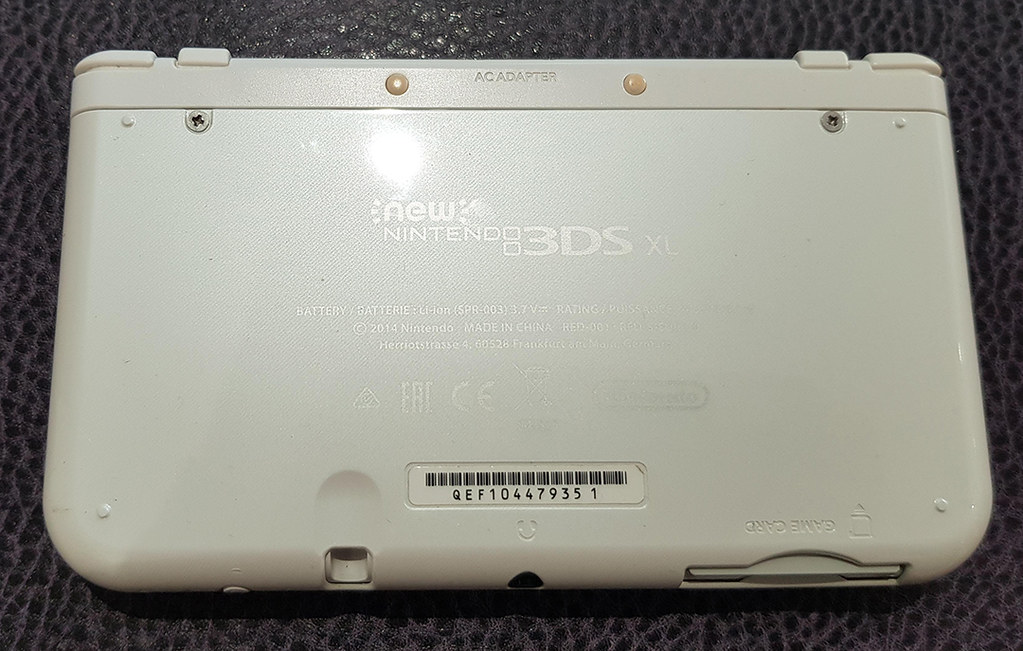
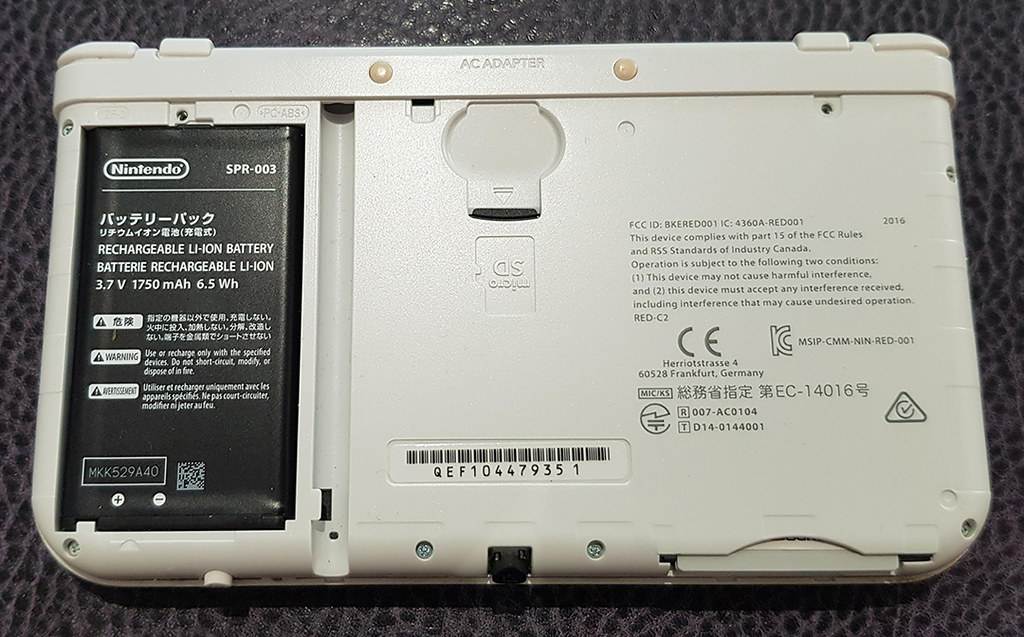


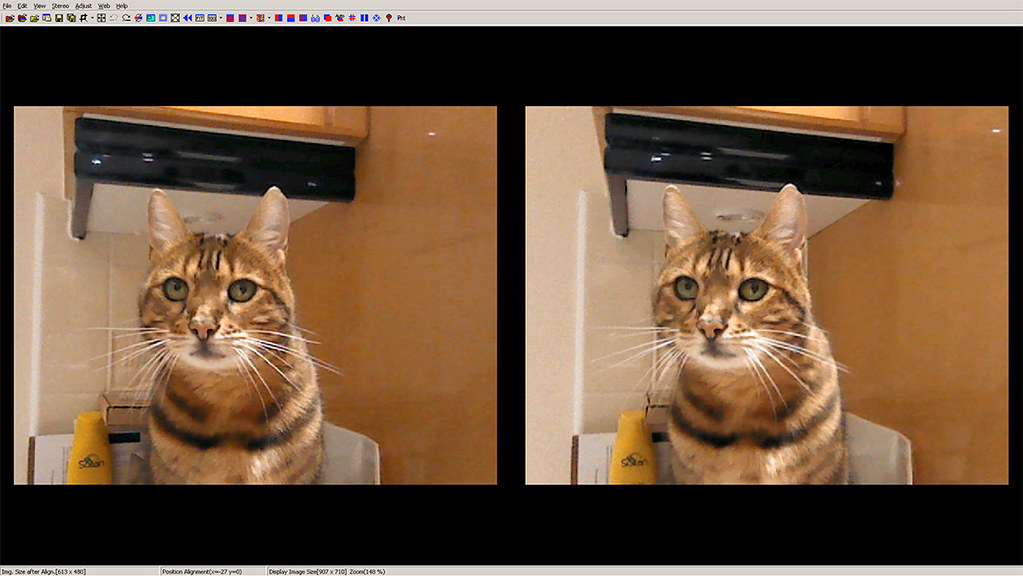

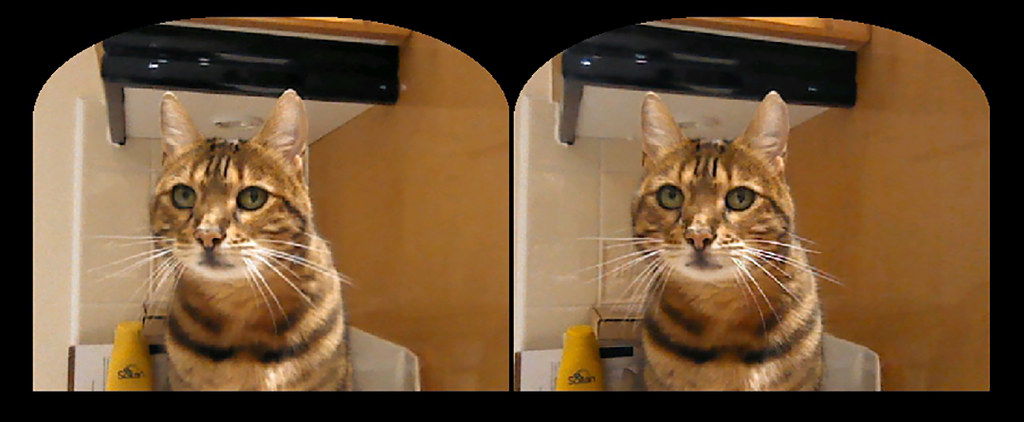
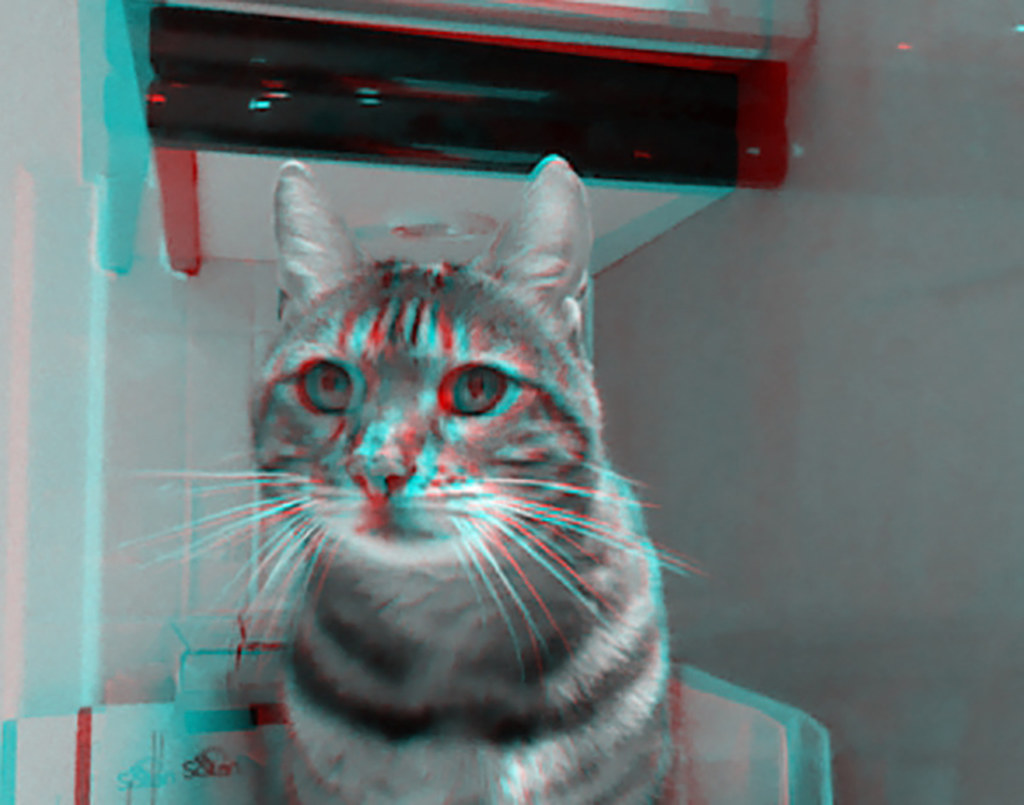
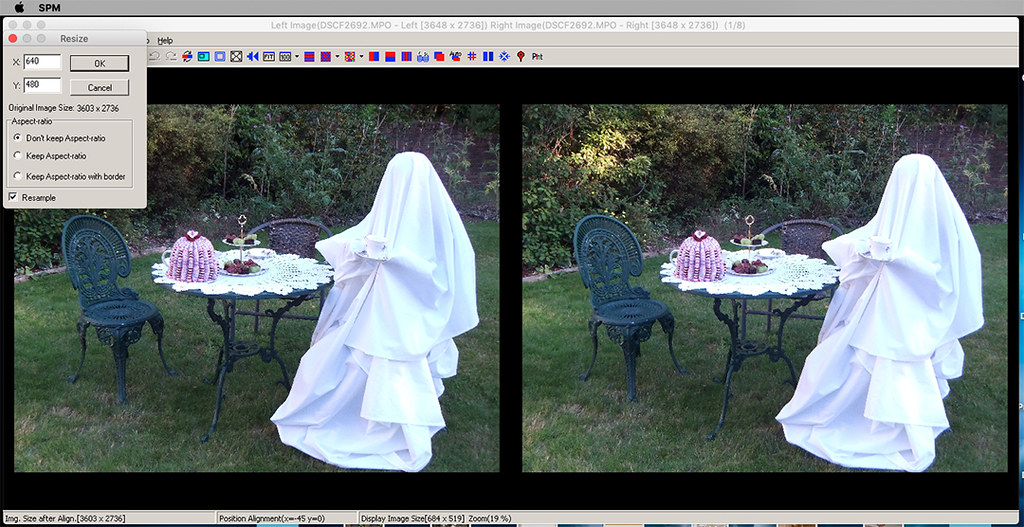


0 Response to "How to Upload Images From Nintendo 3ds"
Post a Comment